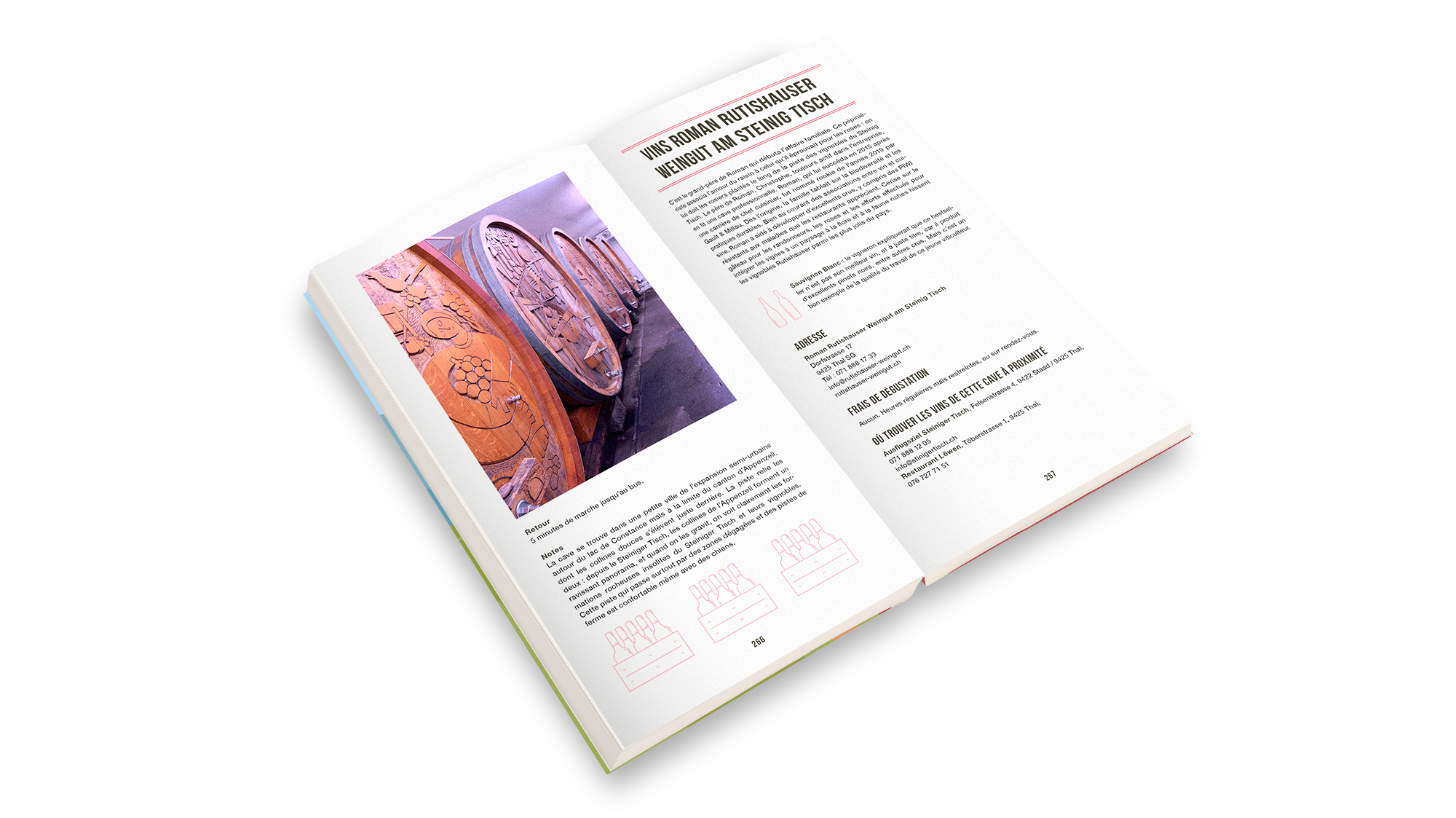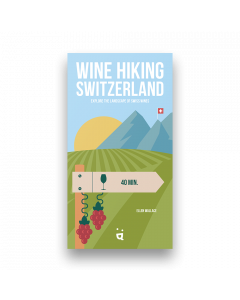Welcome to our (publishing) house
Interview Ellen Wallace

1) You have already published a book on Swiss wines, where does your interest in this drink come from and what is different with this book?
I never drank wine growing up in the US, but at university everyone drank (mostly excessively) beer and cheap wine. So it was a shock to move to Paris in my late twenties and discover that wine was good to excellent, that people drank it mostly just with meals and always with other people, that it wasn’t considered a way to get high or drunk so much as an integral part of social interactions. In other words: wine was an important cultural thread. I had to report on the wine business in France, where I worked for Time Magazine and Business Week, so I learned about the industrial aspect of wine before really discovering artisanal wines in Switzerland, where the cultural thread is clearer. I wrote an earlier book, an introduction to Swiss wines in English for two audiences: people who knew a lot about wine but nothing about Swiss wine and people who asked questions because they knew nothing about wine, arrived in Switzerland and fell in love with the Swiss wine landscape. Swiss Wine Hiking is also aimed at two audiences: again, those who know about Swiss wine but who are becoming more conscientious about getting out and moving (the rare positive fallout from Covid!), and hikers who like a glass of wine but know little about it and want to know more. I want to inspire people to understand that wine, especially in Switzerland, is much more than a drink. It’s a wonderful way to discover more of this country.
2) The wine world gives the impression that it is a domain of "specialists"/knowledgeable people, how did you get into it? And how do you make it accessible to "novices"?
The wine world is increasingly made up of specialists who have developed their own language, as wine marketing has grown into a business. The US has had a huge impact on a shift in the wine business from selling locally and regionally to going for the mass market.
For my part, I knew that the only way to be a newcomer, a woman and a foreigner and to gain acceptance as a knowledgeable European writer whom marketing people and winemakers alike could count on, was to learn as much as possible. For 30 years I have spent an enormous amount of time talking to growers, vignerons, exporters and people who simply drink wine. l want to understand what moves them, and share that. I’m now a member in Switzerland, by invitation, of the Mémoire des Vins Suisses, a group of some of the country’s most respected wineries and a small group of professionals. And abroad I’m a member of the International Circle of Wine Writers, limited to writers with a strong publishing track record. That said, my interest is not in writing for other professionals in a business that can feel incestuous. I want the general public to realize that wine is not for snobs and while it has its own language you don’t have to be fluent to appreciate it. Wine remains a local product that is accessible and easy to understand. Regularly walking Swiss trails near vineyards is one of the best ways to reclaim what has for centuries been simply a part of the culture, shared. On a recent hike a man new to wine asked me if you get several crops a year from vines - this is the kind of basic question professionals forget people have, and I want “novices” to feel comfortable asking these.
3) What did you select first: the wines or the hikes?
I wanted this book to be as representative of Switzerland as possible, so it was crucial to start by selecting the wines, then the cellars, and only then create the hikes around them. More than 60 grape varieties are regularly used to make wine in this country, an unusually high number, explained in part by the very varied geography and many micro-climates. A grape that does well high in the Valais Alps won’t necessarily be at home in Basel or Geneva. I wanted to include wines from grape varieties in every region, and then, to ensure balance, I selected a number of wineries that roughly equated the proportion of wine each region produces, so Valais, the largest, has the most hikes, and the Three Lakes region, much smaller in terms of wine produced, has fewer. I wanted to balance large wineries and small family ones, famous cellars and lesser-known ones, expensive with very affordable wines. And once I felt I’d achieved a cross-section of wine, I created the hikes, longer ones for seasoned hikers and shorter ones for people new to hiking trails as opposed to walking vineyard paths. The only balance I would have liked, but it wasn’t practical to include them, is more high mountain hiking. Switzerland excels here. But given that it’s rare to find vineyards above 900 m and that each hike starts and ends with public transport, it wasn’t realistic to have many of these.

4) What is special about Swiss wines?
Swiss wines hold a special place for wine connaisseurs because so many are hand-crafted, artisanal by world standards. They are discreet, made with great precision and technical skill, but mainly they are made by people who focus very much on understanding their terroir. This means they insist on letting the grape speak, so they aren’t making wines by recipe, but rather letting each grape variety and vine parcel tell them for each vintage and its unpredictable weather, what is needed to turn grapes into beautiful wines. Terroir has become a marketing term, but beyond that it’s a simple concept of what you need to make good wine, and Swiss wineries are truly good at understanding it.
5) If you had to recommend only one wine tour and tasting, what would it be? / Remember only one Swiss wine to taste absolutely once in your life?
If my best friend showed up tomorrow and said I have time for just one hike, one tasting, where would we go? That’s a tough one because I would want to have both some of the most magnificent scenery in Switzerland and an unforgettable wine, and adding in some historical and architectural interest for distraction would be great. I think we would go to Saillon, admire the stained glass art on the trail that follows the history of a Robin Hood-like character, Farinet, see his vineyard (owned by the Dalai Lama), which is the smallest cadastral vineyard in the world, take the Farinet suspension bridge and walk down through the vines above Chamoson, whose vineyards stretch from the base of spectacular peaks to the Rhone. If we were feeling strong I would suggest we double up and do part of a second hike, the Chamoson loop, for its beautiful alpine and Rhone valley views. We would end up at Simon Maye et fils winery, for a taste of the old vines Syrah Vieille Vignes. I’d explain that the Rhone valley in France is where the most famous Syrah wines come from, but that in recent years Switzerland has been making a name for itself for these northernmost Syrahs. These are beautiful wines! Made on the banks of a younger and wilder Rhone, where rocky minerals from the Alps seep into streams that rush to the valley.
But is there one wine in Switzerland that marks you for life, that you simply must sip? Yes, a red, with deep dark cherry notes: Cornalin from the Denis and Anne-Catherine Mercier winery in Sierre. Ask for the history of this grape and when to best drink it and how. Or just pour a glass and let it speak for itself.



Validate your login
Login your account
Create New Account